BioResource Newsletter Vol.5 No.2
|
|
2009/2/28
| Information on Resource-related Events: |
 Technical training on the use of frontier bioresources Technical training on the use of frontier bioresources
"Technical Training on Culturing and Preserving Anaerobic Bacteria"
Training Period: Monday, March 2, to Tuesday, March 3, 2009 (for 2 days)
Place: Japan Collection of Microorganisms, RIKEN Wako Institute
 The 3rd International Biocuration Conference (IBC 2009) The 3rd International Biocuration Conference (IBC 2009)
Date: April 16-19, 2009, in Berlin, Germany
(for details, please visit http://projects.eml.org/Meeting2009)
Details are available at: http://www.nbrp.jp/
Asahi Shimbun carried a news item regarding the National BioResource Project,
entitled "National Commitment on Preserving Experimental Organisms," in the
science section of the morning issue on February 2, 2009.
|
|
| Hot News from Abroad No. 25 |
|

|
 Emmer Wheat and Aegilops squarrosa in Iran Emmer Wheat and Aegilops squarrosa in Iran
Yoshihiro MATSUOKA, Lecturer,
Department of Bioscience, Fukui Prefectural University
|
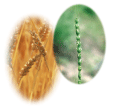
|
|
|
|
|
|
 Background of the Investigation Background of the Investigation
It is widely accepted that bread wheat is derived from emmer wheat and Aegilops squarrosa. Fifty years back, Hitoshi Kihara, the authority figure in plant genetics, had found that these 2 mixed-breed plant species showed morphological and genetic similarities to bread wheat. Combining these findings with the knowledge from other studies, Kihara hypothesized that bread wheat could have evolved from a hybrid species that was created by natural hybridization between emmer wheat, which had been cultivated as a crop, and A. squarrosa, which grew as a weed in the wheat fields. Collateral archaeological evidence suggested that this hybridization occurred approximately 8,000 years ago. However, could such a hybridization event occur in a natural environment? One of the approaches to verify Kihara’s assumptions based on plant genetics would involve field studies to investigate the ecological niches of emmer wheat and A. squarrosa.
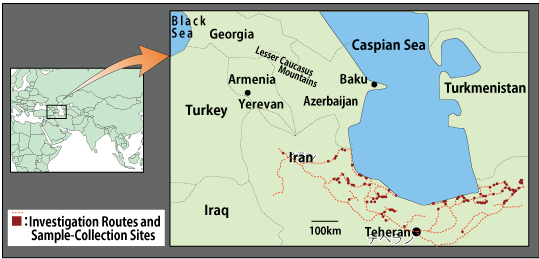
A. squarrosa is a wild plant species that is widely distributed in Southwest and Central Asia. In contrast, emmer wheat was domesticated approximately 10,000 years ago in the "Fertile Crescent," which encompasses the southeastern region of Turkey. Thus, assuming that an emmer-wheat cultivar encountered A. squarrosa during the propagation of wheat cultivation towards the northern regions, it is likely that these 2 species hybridized in the region stretching from the Transcaucasus to northern Iran, near the "Fertile Crescent," where A. squarrosa had grown abundantly. In 1955, Kihara’s research group explored the distribution of these 2 plants in northern Iran during a Kyoto University Scientific Expedition to the Karakoram and Hindukush (KUSE), and they observed that A. squarrosa grew as a weed in an emmer-wheat field in Goznabi village, which is located to the southeast of the Caspian Sea. However, field investigations on this aspect were subsequently discontinued; therefore, the detailed distributions of these 2 species in the region have not been studied.
|
|
 Wheat Investigation in Northern Iran Wheat Investigation in Northern Iran
|
Between 2003 and 2006, the authors participated in a scientific investigation supported by a grant-in-aid scientific-research fund (the investigation was led by Shoji Ohta, professor, Fukui Prefectural University). Based in the National Plant Gene Bank of Iran located in the suburb of Teheran, we investigated the wheat species in northern Iran. We visited wheat fields with local researchers and observed and collected samples of cultivated crops and naturally growing wild wheat for 3 weeks, mainly in the first week of July, in each year. In a total of 4 expeditions, we covered the coastal lowland region of the Caspian Sea and almost the entire region of the Alborz mountain range adjacent to the south of the lowland region, and determined the distribution of the emmer-wheat cultivars and A. squarrosa. Consequently, we clarified that (1) A. squarrosa is widely distributed, and morphologically diverse groups grow together in the region, and (2) emmer-wheat cultivations have significantly diminished in recent years, and they are no longer cultivated in the region described in the report of KUSE. |
|

Landscape of Alamut:
The villages are scattered on the steep mountainsides. A large group of wild einkorn wheat grows naturally in the grassland on the front side.
|
|
 Distributions of Emmer Wheat and A. squarrosa Distributions of Emmer Wheat and A. squarrosa
Although emmer-wheat cultivations are rapidly vanishing, we found 2 areas, both of which were not covered in the previous study, where an emmer-wheat cultivar and A. squarrosa coexisted. One region, Alamut, is located on the southern slope of the Alborz mountain range and the other, Deylaman-Barrehsar, is located on the northern slope of the same range. The detailed distributions can be found in the map in the article (Genet. Resour. Crop Evol. 55:861-868 2008). In these regions, A. squarrosa grows as a weed in the emmer-wheat fields, which could have been the case 8,000 years ago, when bread wheat evolved. Therefore, it can be speculated that a natural hybridization is occurring even at the present moment. Further investigations are required to elucidate this aspect.
|
|
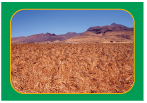
Cultivation of Emmer Wheat (Alamut):
Emmer wheat is a type of macaroni wheat and 2 cultivars, which have different ear colors and names, are co-cultivated. A. squarrosa grows as a weed in and around the wheat field.
|
|
 Field Information and Bioresources Field Information and Bioresources
In this investigation, we made efforts to collect bioresources such as seed and plant samples as well as gather information such as nominal designations, cultivation methods, and uses of crops, and the local names of weeds. Although this field information can serve as primary data, in the current scenario, it is difficult to present this information in the form of research achievements. However, it would be ideal if all the bioresource-related field information were preserved together. Overseas field studies are often impeded by unforeseen obstructions. Therefore, even after taking all possible measures and accounting for the limited time and financial resources, it is occasionally impossible to conduct a sufficiently in-depth investigation. In such cases, the collected fragmentary data are unsuitable for publication as a journal article, leading to problems associated with the storage of this data. Therefore, a system that accumulates and widely shares valuable field information, even fragmentary information, would be extremely useful for future investigations.
Additional Note:
A report of our scientific expeditions is available upon request.
(Email: matsuoka@fpu.ac.jp)■ |
|
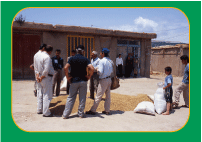
|
|
Hearing Investigation:
We surveyed the crops harvested in the village and conducted interviews, which were interpreted by the local researchers, to obtain information on the nominal designations and cultivation methods. Sometimes we were served chai tea and homemade yogurt. |
|
|
|
|

|
Erudite Lecture Series by Dr. Benno: No. 2 |
|
| |
Feces can Provide Information on Your Health
The large intestine is the body organ that is most susceptible to diseases.
Surprisingly, most diseases are associated with imbalances in the enteric environment.
The ingested foods are dissolved in stomach, digested and absorbed in the small intestine, and the remains are carried to the large intestine. Food remnants with a water content of approximately 80% are then evacuated as feces. Concurrently, a large amount of bacteria is also evacuated along with the feces. Astoundingly, nearly a trillion bacteria are present in a gram of feces. The bacterial flora proliferates by metabolizing the contents in the bowel and this changes their proportion. In other words, the large intestine is an organ for culturing bacterial floras. The colon contains more than 500 types of bacteria, and imbalances in the proportions of individual species are responsible for various bowel diseases such as constipation, infections, colon cancer, and colon polyps. In addition, the bacterial flora is also associated with dementia, obesity, and metabolic syndromes. Therefore, most of the common diseases cannot be investigated without considering the role of the bacterial floras.
The best method to identify abnormalities in the intestinal bacterial flora is to study the feces. It is important to examine the amount, color, and odor of feces, in addition to determining the ease with which the bowels are emptied. These observations will serve as the starting point in identifying the ideal dietary habits. Therefore, individuals are expected to make an effort to modify their dietary habits to produce ideal feces and improve their skills in monitoring their feces, since feces are not only excretory products but also as an ideal indicator of general health.
Dr. Benno: Yoshimi BENNO, Head of Microbe Division,
JCM, RIKEN BioResource Center
|
|
|
| Hot News from Abroad No. 26 |
|
|
 Plant and Animal Genome
XVII Conference Plant and Animal Genome
XVII Conference
January 10-14, 2009
San Diego, California
|
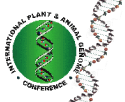
|
|

|
The Plant and Animal Genome (PAG) conference in 2009 was organized in San Diego, CA, USA, as in every year. Although we had expected jet lag (17 hrs behind Japan) and intense sunlight, our stay in San Diego this year was more comfortable than that in the previous years due to the low temperature.
Researchers of various fields had gathered from all over the world, and oral and poster presentations were conducted. We presented a poster on the support of BioResource World (http://resourcedb.nbrp.jp/) for gene ontology (GO). At the Biochemistry and Molecular Biology (BMB) conference in Japan, we felt that researchers were still only familiarizing themselves with GO; however, we found that GO was used as a conventional term at the PAG conference and was considered to be an essential tool for community annotations. An easy appending of GO annotations on genes was demonstrated at the introduction of EcoliWiki (http://ecoliwiki.net/colipedia/index.php/Welcome_to_EcoliWiki), which is intended to be used for community annotations of Escherichia coli. Community annotations using GO- and internet-based tools are expected to accelerate in the future.
(Shingo SAKANIWA)
|

Poster Exhibitions at the PAG Conference
|
We introduced a new function for searching BRW resources on the basis of GO in a poster entitled "'BioResource World' As A Biological Resources Portal." There was a good response to our poster presentation, and the participants were interested in our methods to associate GO with resources.
We attended workshops of the European Bioinformatics Institute (EBI) and other computer demonstrations and also saw other posters on databases. In these posters, we noted that an increasing number of databases allow users to append information on the accumulated data. While some databases are based on Wiki, others, such as MaizeGDB, are not; most databases realize a function of consumer-generated media (CGM) in some or the other way. We think that it is important to develop a scheme that allows users to freely contribute the information available to them, increasing the quality and quantity of information in the databases.
(Gaku KIMURA)
|

|
|

|
|
Coming up in the next issue !
The special topic on resources in the
next month's
issue will be "Silkworm". |
|
Editor's Note: Following a topic on wheat in Azerbaijan and Armenia in the last September issue, we have included an article on wheat in northern Iran in this issue. For further information on the morphological characteristics of A. squarrosa, please visit the website http://www.shigen.nig.ac.jp/wheat/komugi/strains/mozumeImageBrowseAction.do to see the images of A squarrosa. We hope that a scheme for the effective use of field information, including information that is not suitable for publication as a journal article, will soon be developed. (Y.Y.)
|
Contact Address:
1111 Yata, Mishima-shi, Shizuoka 411-8540, Japan
Center for Genetic Resource Information, National Institute of Genetics
Tel: 055-981-6885 (Yamazaki)
E-mail brnews@chanko.lab.nig.ac.jp
"translated by ASL translation service and proofread by Sharoh Yip"
|
|
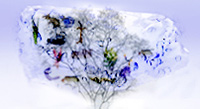



 Background of the Investigation
Background of the Investigation
 Wheat Investigation in Northern Iran
Wheat Investigation in Northern Iran







